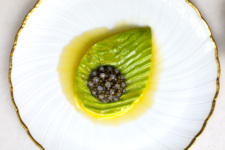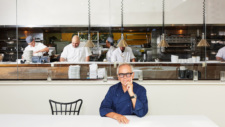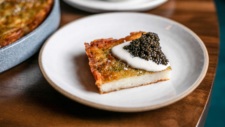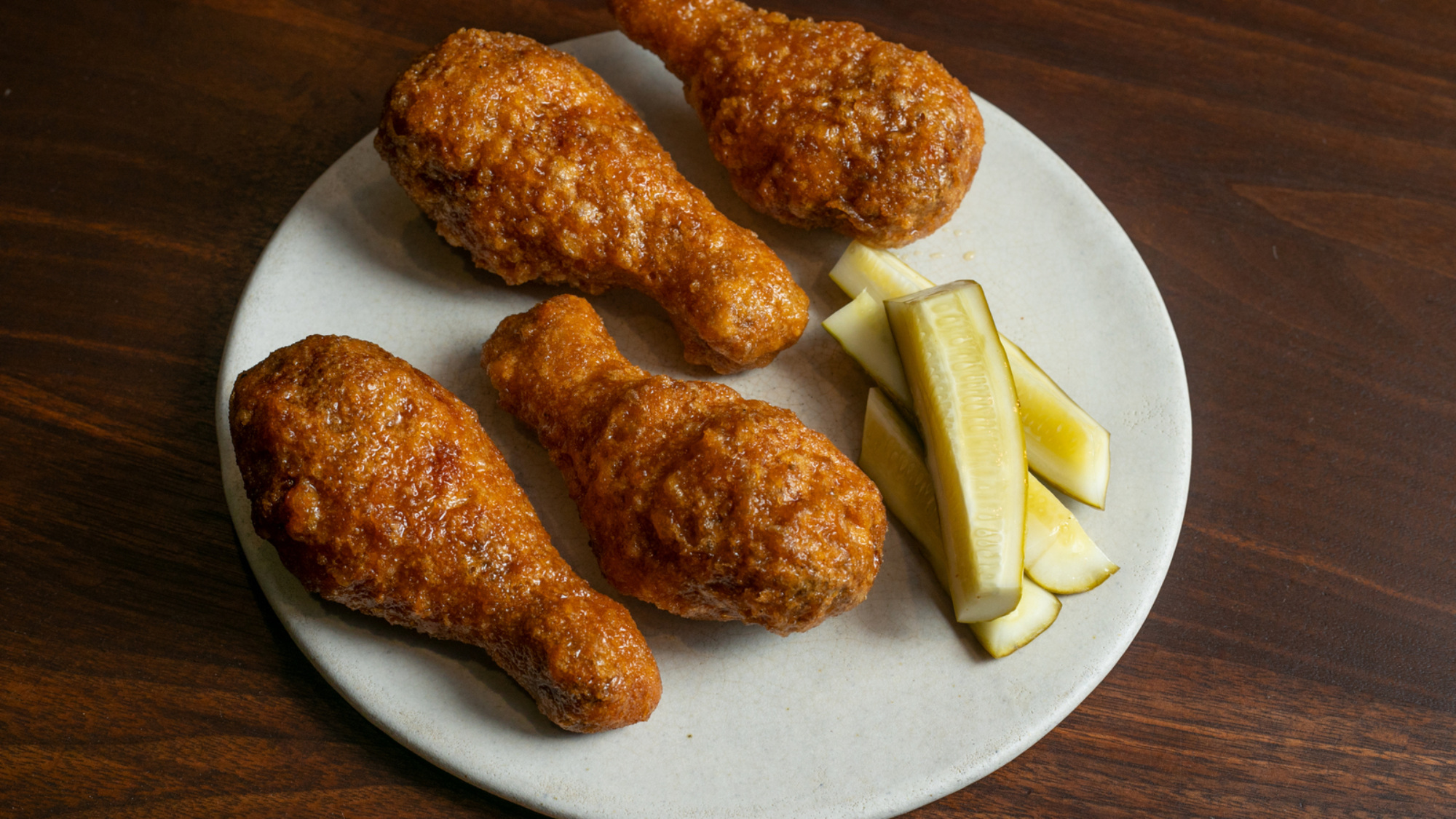
Resy Features New York National
Six Ways That Momofuku Ko Forever Changed American Dining
Momofuku Ko was not David Chang’s first successful restaurant in New York City, nor is it his most anthemic. Those credits go to Momofuku Noodle Bar and Ssäm Bar, the scrappy East Village counters that forever changed how diners across America would think about good cooking and good eating.
But Ko, which celebrated its 15th anniversary this year before announcing that it was halting service in November, made an indelible mark on the restaurant industry in many other ways.
When Ko’s first reservations went live on its pioneering online reservation system in March 2008 (more on that below), a new fine-dining culture was taking shape in New York. The most revered chefs at the time were people like Jean-Georges Vongerichten, Gray Kunz, and Alain Ducasse — and they were cooking mostly French food at elaborate uptown dining rooms. But downtown, there was a growing resistance to that formality. Diners sought more accessible, less Eurocentric, and less ostentatious dining that still aimed for the stars.
Enter David Chang and his cadre of anti-chefs — who would become the chief catalysts of this change. Building on the success of other downtown fine-dining anomalies like Colin Alevras’ Tasting Room, 71 Clinton Fresh Food, and WD-50, Chang and his team fully blew up the status quo, stripping fine dining down to its barest element — the food — and making no apologies (and definitely no accommodations) while doing so.
The results on the plate were what mattered, versus the pomp. And it can be easy to forget just how transgressive it was at the time. As New York Times critic Frank Bruni wrote in his 2008 three-star review, Ko “wagers that for a younger generation more focused on food than on frippery, a scruffy setting, small discomforts and little tyrannies are acceptable — preferable, even.”
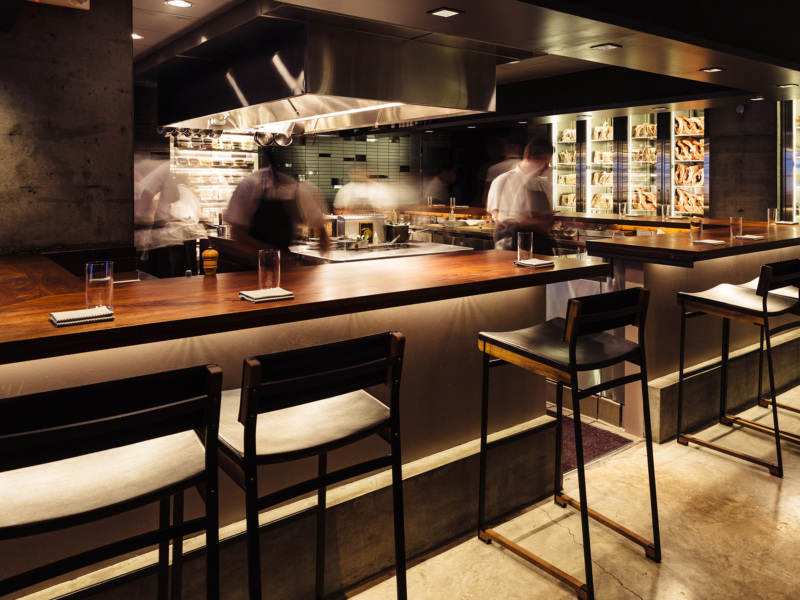

Reservations at Ko have been scarce since those early days; praise has not. In 2009, the James Beard Foundation named Ko its Best New Restaurant. That same year, the Michelin Guides awarded Ko with two stars, a feat for any new restaurant. In 2014, Ko moved into a bigger, more comfortable space at 8 Extra Place, earning a renewed three-star Times review. In 2018, the team opened Ko Bar, a more casual extension of the chef’s counter, to a flurry of hype and acclaim, reviving the fandom from a decade earlier.
Not everything Chang did at Momofuku Ko was original — and the restaurant’s ongoing success is in large part a testament to the talented group of chefs and managers Chang hired over the years. But Chang’s original vision of democratized fine dining was prescient — the restaurant’s rebellious spirit captured the mood of the day, which in turn amplified its influence over the years.
Now, in 2023, we wanted to recount all the ways in which the restaurant forever changed fine dining in America.
1. Ko ushered in the era of “chef’s choice,” at least in America.
It’s no secret that Chang’s entire career was greatly influenced by Japanese dining culture. In designing Momofuku Ko, he borrowed liberally from the philosophy of kaiseki, and the sushi counter format. Guests sat shoulder-to-shoulder at an intimate counter, facing an open kitchen where chefs prepared a seasonally-evolving menu. This was rare, but not unheard of at the time; Joël Robuchon was already making waves with his L’Atelier, which brought high-minded French cuisine to a radically informal counter setting. By the time Ko opened, there were Ateliers in Paris, New York, Tokyo, and elsewhere.
But Chang took this idea one step further; he connected the tasting menus of kaiseki with that sense of transparency in chefs’ work — specifically by turning Ko into a stage where the chefs emerged as the headlining stars of dinner. L’Atelier may have turned the lights on the band, but Ko turned the band into the headlining act. Ko’s great contribution, then, wasn’t just visibility of the kitchen, but a focal shift away from diners onto the expert hands of the chef. Again, this may not seem so novel today, when diners are well-versed in the language of tasting menus and subordinate themselves willingly to a chef’s whims, but 15 years ago it was a transformative act.
“We were just a bunch of punks that thought we were better than we were,” wrote Peter Serpico, one of the first executive chefs at Momofuku Ko. Punks or not, Ko’s influence became clear as restaurants and bars across the city touted their own “Ko-style” service. Inherent in this association was the chef-led, exhibitionist approach that Chang had devised.
2. Ko pioneered “haute stoner food,” giving lowbrow cooking a place on highbrow menus.
In the Momofuku cookbook published in 2009, Ko is described as a “cook-centric restaurant,” which not only speaks to the format of the meal, but the nature of the food itself. Chang’s love of unfussy food with maximal pleasure (the stuff chefs eat after work) is well-documented, and Ko is where he first got serious about this sort of unserious food. The signature Ko culinary move was to blend together delicious, relatable flavors with serious technique and presentation. On the opening menu, pork rinds and a pork fat-brushed English muffin kicked off the meal. Lasagna made an appearance — with snails, porcini mushrooms, and ricotta foam. In her 2015 review, New Yorker critic Amelia Lester called it what it was: “haute stoner food.”
With the opening of Ko Bar, the team had even more opportunities to embrace haute stoner — cold fried chicken made as much of a splash in 2018 as Ko’s signature dish of smoked egg, Hackleback caviar, and fingerling chips did back in 2008. And even though Thomas Keller had been cooking cheffed-up Americana at The French Laundry years earlier, Chang and his team of chefs put the concept on overdrive; if Keller’s food was a polite chuckle, Chang’s was a guffaw. “Chang has taught us at once how to take food more seriously and consume it more casually,” Lester wrote.

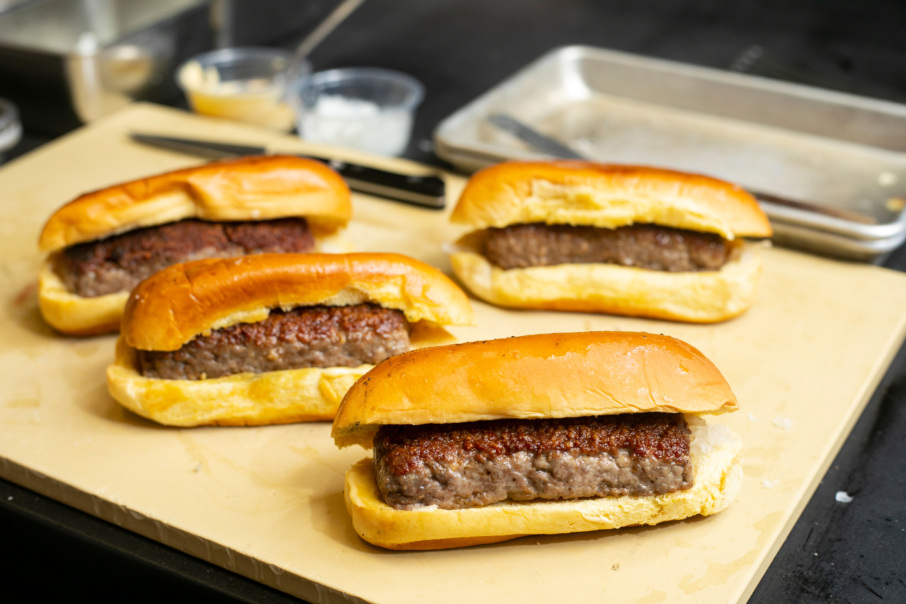
3. Ko reimagined fine-dining hospitality.
In addition to changing the scope of fancy food, Ko shifted the vibes. Everything Chang did was a reaction to the pretenses of fine dining at the time. His timing was spot on — Ko’s opening coincided with the 2008 financial crisis and economic downturn, making it the dining room of choice for a generation of disenfranchised young people. It was the cool and rebellious downtown upstart compared to uptown old-money pomp.
Specifically, Ko trimmed away all the excesses of formal fine dining — the widely-spaced tables, pearly white tablecloths, complete deference to the guest. Instead, diners sat on backless seats in a cramped, barren shoebox while listening to Led Zeppelin. This was long before austere sushi counters were a widespread sign of luxury. Service, too, was reimagined. The formal staff-to-guest ratio was drastically cut, with chefs performing their duties behind the counter while also acting as the servers. This allowed Chang to open Ko with an $85 menu of roughly 10 courses filled with luxury-signaling ingredients like oysters, foie gras, and caviar — presented in ways that were new and in no way deferential to that luxury. (Foie gras was frozen and shaved into flakes, a flurry of animal fat, served with lychee, pine nut brittle, and riesling gelée.)
As proof that this was all quite revelatory, critics spent about as much time commenting on the distinct lack of comfort as they did about the food. Pete Wells once quipped in a review, “Mr. Chang was leading a daring experiment that asked: If you aspired to serve food as original and refined as anything in an expensive uptown restaurant but wanted to keep prices down, exactly how many amenities could you strip out? The answer turned out to be, ‘Not quite that many, Dave.’”
Still, by posing the question, Ko provided a model of minimalist fine dining that inspired a generation of young chefs and diners. Even after the move to a bigger and more comfortable space, the vibes of cool, youthful fine dining that Ko originated would persist (albeit at a substantially higher price).
4. Momofuku Ko made space for identity-led cooking.
Specifically, the golden age of Asian American chefs in top kitchens today has a direct lineage back to Ko. Indeed, it was a progenitor of the ways in which American cooking has become a vehicle for deeply personal stories as a more diverse set of chefs take charge of their own kitchens. Yes, Korean Cajun or Japanese Jewish fusion may be almost banal in today’s culinary climate. But in 2008, this kind of self-expression was still largely unexplored; to the extent it was, it hinged greatly on French-dominated narratives. At Ko, Chang deepened his exploration of his Korean heritage, Southern upbringing, and European aspirations. He placed them on equal footing — and he did it with an unprecedented level of national attention and fervor.
Ko’s opening menu offered dishes like Berkshire pork belly served in “kimchi consommé,” and scallops with yuzu and Benton ham broth. Or the foie gras — an instant classic that remains on the menu today. Critics and diners alike were eager to listen, giving him an immense platform to make the case for an intimate style of story-telling, which happened to focus on his Asian American experience. This in turn primed the American palate, and wallet, for the proliferation of deeply personal cooking we see today, in fine dining and nearly everywhere else.
⬛
In addition to changing the scope of fancy food, Ko shifted the vibes. Everything Chang did was a reaction to the pretenses of fine dining at the time.
⬛
5. Ko gave a launchpad to chefs from a variety of backgrounds.
Chang has received a lot of the credit for Momofuku Ko’s success over the years, but in many ways, his most notable contribution was knowing when to give his stars the ability to shine. That and having a keen sense of his own shortcomings as a chef and leader. Either way, Ko has always been a team effort; critics and astute diners alike knew that it was names like Peter Serpico, Joaquin Baca, and Sean Gray who were the hit makers behind the counter. And then there’s Christina Tosi, Momofuku Ko’s first pastry chef. Tosi debuted cereal milk on Ko’s first tasting menu in the form of a cereal-milk panna cotta. Her innovative talent led to a stand-alone bakery called Milk Bar. The rest, as they say, is history.
Beyond the kitchen, Ko has served as a platform for some of the industry’s top front-of-house talent. Former general manager Su Wong Ruiz and beverage director Jordan Salcito expanded her influence and personal businesses after writing the wine list at Ko. Today, Ko’s legacy as one of the most diverse fine dining restaurants continues, with a multicultural all-woman team — executive chef Esther Ha, beverage director Nikita Malhotra, and general manager Jacqueline Chung.
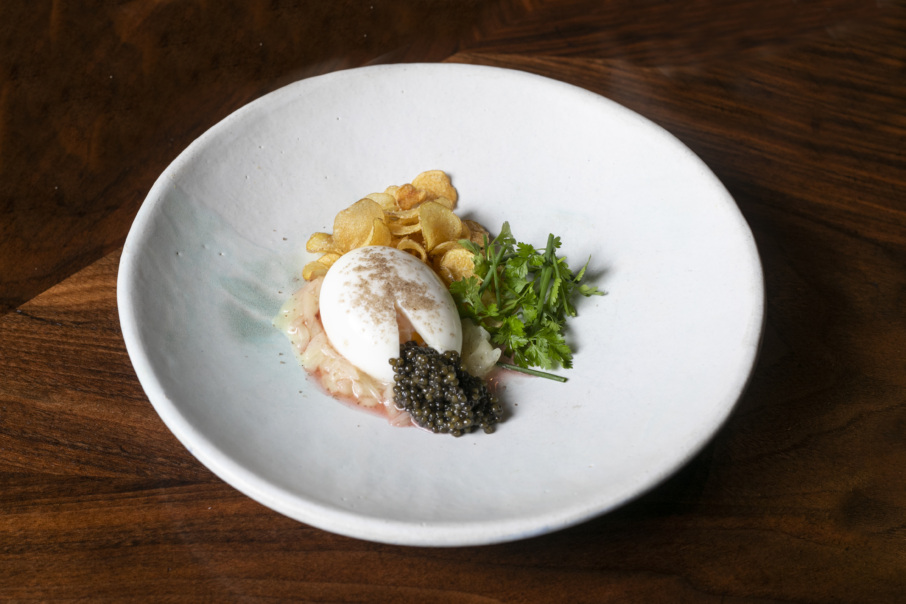

6. Thank (or blame) Ko for starting the impossible online reservation trend.
Hot reservations have been an inextricable part of eating out in New York for decades, but Ko was the first to move this competitive sport online. It launched with a first-of-its-kind online, pre-paid reservation system that was notoriously hard to book and known for being targeted by hackers. (Stop us if this sounds familiar.) It was all very new and confounding at the time, and spurred a cottage industry of reporting and think pieces at the time.
As Adam Platt wrote in his New York Magazine review of Ko (after just one visit instead of the usual three, because he couldn’t get the reservations), “So how do you crack this fiendishly egalitarian, New Age reservation system? It helps to have the services of many diligent assistants willing to peck at their keyboards like gaming zombies for an entire week.”
Unbeknownst at the time, this new system was laying the groundwork for the scarcity-and-demand model that fuels the reservations landscape today. Soon, the act of securing the reservation became as important as the meal itself. And in some ways, it even democratized the effort. Indeed, it might have been a precursor to the reservation systems you know well today.
So next time you set a Notify, hit refresh, cross your fingers, and thank Momofuku Ko.
Mahira Rivers is a restaurant critic and writer based in New York, and Resy’s dining columnist. In addition to spending five years as an anonymous inspector for The Michelin Guides, her writing has been published in The New York Times, New York Magazine, Food & Wine, GQ and elsewhere, and recognized by the James Beard Foundation. Follow her on Twitter and Instagram. Follow Resy, too.
Discover More

Stephen Satterfield's Corner Table










